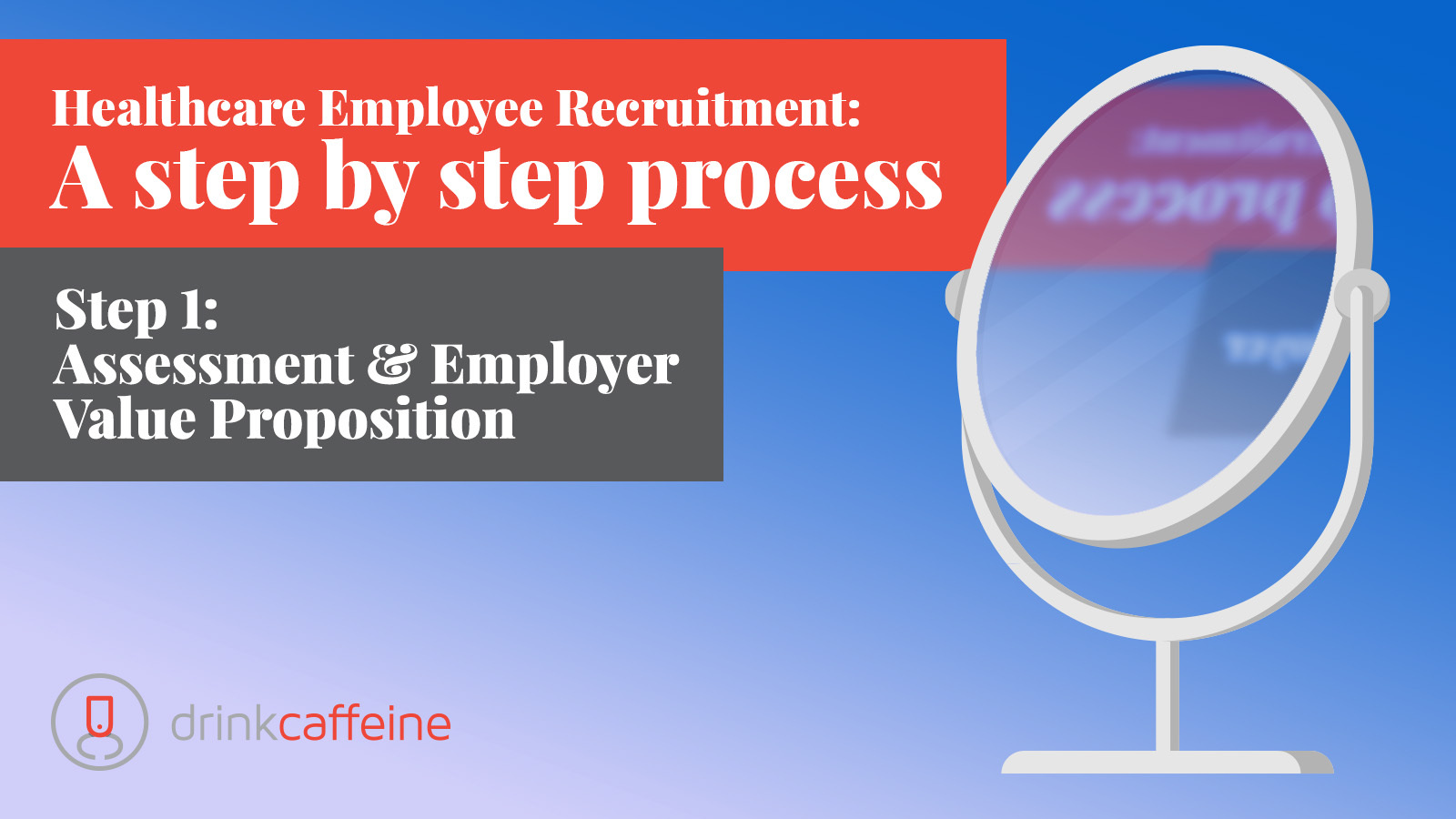You recognize the need to attract new employees, and you need to start reaching them. Now.
We get it. No one appreciates the immediate challenges of healthcare labor markets more than we do. But first, we must gaze in the mirror.
Assessment of your Employer Brand means knowing its strengths and weaknesses
It can be boiled down to 4 initial steps. Here’s what to do.
1. Define 12 stakeholders
Define a group of stakeholders whose input will be the basis for your employer brand development. We often suggest representing clinical, administrative, HR, management, and other disciplines for a range of perspectives, as well as a mix of older and newer employees.
The 3 criteria for inclusion:
- They represent the positions in you seek to fill.
- Each person has a strong connection to the brand.
- They agree up front to participate in research.
And remember, marketing should facilitate the research process more than influence it. Hiring an agency (like us) to interview stakeholders allows truthful, anonymous, unfiltered input.
2. Design a simple, 5-question survey instrument
Start with 12 interviews from stakeholders, and base each In-depth Interview (IDI) on the same discussion guideline and probes.
Here’s a sample from an internal study we performed for a CHC client:
- What are [Name of organization]’s strengths as an employer?
-
Probes: Supervisors. Ethics. Principles. Commitment. Socially responsible organization/DEI. Community service. Making a positive impact. Job security. Immersion in work
-
- What are its weaknesses?
-
Probes: Internal communication. Leadership-Management-Staff communications. Salary/Benefits. Staffing levels. Training. Advancement. Flexibility. Employee recognition. Performance reviews. Onboarding: Organization of materials, email support, manager engagement
-
-
How would you describe the culture at [Name of organization]?
-
Probes: Positive/Negative. Formal/Informal. Isolated/Connected. Committed to patients. Progressive. Fair. Values/DEI.
-
- What are the key changes that need to be made to RETAIN good employees?
-
Probes: Work environment. Opportunities for advancement. Compensation. Benefits. Schedules.
-
- Why did you decide to work at [Name of organization]? What keeps you going?
-
Probes: What is gratifying about your job? What purpose do you feel you’re serving? Why is your work important to you, to patients, and to the community.
-
Online on phone-based IDIs usually produce consistent themes within 8-12 interviews.
If not, you can extend the study to more stakeholders from the same disciplines until you have enough certainty to do a simple SWOT analysis.
3. Identify your Brand Pillars
Look at your strengths, as reported by stakeholders. Identify the 3 most important ones and call them Employer Brand Pillars. They are the essential attributes that can provide a starting point for how you will position yourself as an employer.
An example:
- Trust
- Teamwork
- Work/Life Balance
4. Draft an Employer Value Proposition
This is a statement that captures the essence of what you offer employees, and it rests on the Employer Brand Pillars defined above. Example, cont’d:
“We commit to offering employees a workplace based trust, collaboration, and a ways of succeeding in life, both on the job and away from it.”
5. Do a competitive audit
Do some research on regional competitors.
Audit their:
- Employer brand/culture. See how they appear on social media. Ask peers and partners what they know and have heard.
- Hiring incentives. Try to learn if bonuses are being offered and for which positions. Determine any details regarding other incentives. You will probably have to start with scraps of information and build slowly.
- Salary. You can always use the Bureau of Labor Statistics as a baseline index for salaries. The Mayo Clinic also has detailed professional profiles and salary information.
- Application process. Test-drive your competitors’ online application process and compare it to yours. Absorb best practices for usability, speed, and calls to action.
This will give you a sense of what you must overcome to win an employee.
Estimated timeframe for Assessment: 3-4 weeks
Remember: Assessment does more than give Marketing and HR the input they need to target and attract employees.
It also builds internal awareness that your employer brand matters, and that a process is underway. It is the first step to better recruitment.
Get ready for Step 2: Personas, Journeys Maps, and Messages
When you’re ready to use data to solve healthcare communications problems, contact us.


